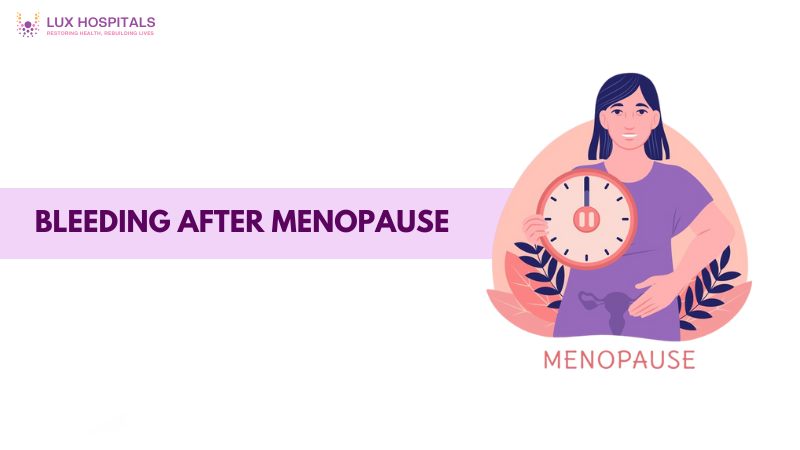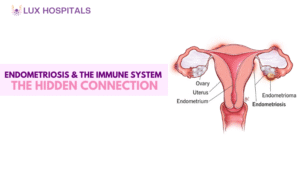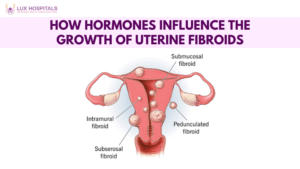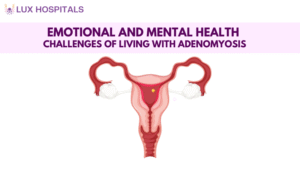Bleeding After Menopause: Common Myths vs Facts

Many women worry about bleeding after menopause, and this issue is frequently accompanied by misinformation and anxiety. Light spotting or discharge is a common symptom, but there are many misconceptions about what it can mean. Knowing the distinction between reality and fiction is crucial for the early detection of dangerous diseases and prompt medical attention. This site dispels prevalent misconceptions to assist women in making educated decisions regarding their health. It offers medical information regarding bleeding following menopause.
Why You Should Never Ignore Bleeding After Menopause?
Bleeding after menopause is a red flag that something abnormal may be happening in your reproductive system. While it’s not always a sign of cancer, it can point to severe conditions like endometrial hyperplasia, uterine fibroids, or hormonal imbalances. Prompt medical evaluation is crucial, even if the bleeding is light or happens only once. Below are some of the myths vs medical facts mentioned. Even one episode of postmenopausal bleeding should be treated as a warning sign.
1. Myth: Postmenopausal Bleeding Is Always Normal
Fact: Bleeding after menopause is never considered medically normal. Even slight spotting or occasional blood discharge warrants evaluation, especially if a woman has gone 12 months without a period. It could be caused by anything from hormonal changes to uterine cancer.
- Common causes include:
- Endometrial atrophy (thinning uterine lining)
- Endometrial hyperplasia (thickening)
- Polyps or fibroids
- Hormone replacement therapy (HRT)
- Uterine or cervical cancer
Ignoring symptoms may delay the diagnosis of severe conditions.
2. Myth: Only Women on HRT Experience Bleeding
Fact: While hormone replacement therapy can cause bleeding after menopause, it’s not the only cause. Women not on HRT can still experience bleeding due to polyps, infections, or cancer. Dismissing it as “hormone-related” without evaluation can be dangerous.
- Non-HRT causes include:
- Vaginal infections or inflammation
- Uterine or cervical polyps
- Endometrial cancer
- Atrophic vaginitis
A thorough examination is always recommended regardless of HRT use.
3. Myth: A Little Spotting Is Harmless
Fact: Any amount of bleeding after menopause should not be considered harmless. Light spotting may be a symptom of endometrial hyperplasia, which can lead to cancer if untreated—even a few drops of blood merit medical attention to rule out underlying pathology.
- Red flags include:
- Frequent or heavy bleeding
- Bleeding after sex
- Accompanied by pelvic pain
- Discharge with odour
Even mild symptoms can have profound implications over time.
4. Myth: Bleeding After Menopause Means You’re Menstruating Again
Fact: Once a woman has reached menopause, the ovaries stop releasing eggs, and menstruation permanently ends. Any bleeding after menopause is not a return of periods but a sign of a potential health issue. Mistaking this for menstruation could delay important diagnosis and care.
- Menopause is defined as 12 months without a period.
- Bleeding after this point is abnormal.
- Only a gynecologist can determine the cause accurately.
Don’t confuse abnormal bleeding with cycle irregularity.
5. Myth: Bleeding After Menopause Always Means Cancer
Fact: While bleeding after menopause can be a sign of cancer, not all cases are malignant. Conditions like polyps or endometrial thinning are more common and usually benign. However, because endometrial cancer is possible, all bleeding must be investigated thoroughly.
- Only 10% of postmenopausal bleeding is due to cancer.
- Early detection drastically improves outcomes.
- Ultrasound and biopsy are standard diagnostic tools.
Seeking care immediately can provide peace of mind and timely treatment.
6. Myth: You Don’t Need to See a Doctor if It Stops Quickly
Fact: Even if bleeding after menopause stops on its own, it still requires medical evaluation. Intermittent or one-time bleeding may still signal a serious condition developing silently. Don’t wait for repeated episodes before consulting a healthcare provider.
- A single incident can be the first sign of endometrial changes.
- Early treatment of benign causes is simpler.
- Catching issues early often prevents complications.
Silence doesn’t mean safety when it comes to postmenopausal symptoms.
Conclusion
Bleeding after menopause is a symptom that should never be ignored, no matter how mild or infrequent. Dispelling the myths surrounding it is essential for empowering women to take prompt action and protect their health. From benign causes to more serious diagnoses, early detection is key to effective treatment. If you’re experiencing bleeding after menopause, consult a healthcare provider immediately to uncover the actual cause and ensure your long-term well-being.
Frequently Asked Questions
Bleeding after menopause can result from hormonal imbalance, vaginal atrophy, endometrial polyps, or more serious conditions like uterine cancer. Medications like HRT may also trigger it. A doctor can help pinpoint the exact cause through exams and imaging.
You should be concerned if you experience bleeding after menopause at any time, even if it's light or brief. This symptom is always considered abnormal and requires evaluation. Early intervention can detect or prevent more serious issues.
Stress is unlikely to directly cause bleeding after menopause, but it may exacerbate hormonal fluctuations in perimenopausal women. Once menopause is confirmed (12 months without periods), any bleeding is considered abnormal. Other medical causes should be ruled out before attributing symptoms to stress.
No, spotting years after menopause is not considered normal and may indicate a problem. Bleeding after menopause, even years later, can stem from polyps, infections, or cancer. Always consult a gynecologist if this occurs.
Diagnosis of bleeding after menopause usually involves a pelvic exam, transvaginal ultrasound, and possibly an endometrial biopsy. These tests help determine the thickness of the uterine lining and detect abnormal growth. Imaging and lab tests guide further treatment steps.




















